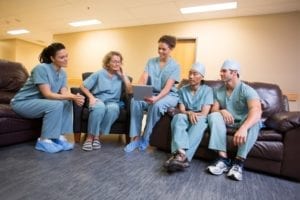 Machines replacing human workers has long been associated with the manufacturing workforce. But it’s encroaching on all kinds of professions, including anesthesiology.
Machines replacing human workers has long been associated with the manufacturing workforce. But it’s encroaching on all kinds of professions, including anesthesiology.
The Sedasys anesthesiology machine is currently only being used in four hospitals, and is restricted to colonoscopies in healthy patients, so the doom is not so impending for anesthesiologists. Colonoscopies are a common medical procedure, with about 14 million performed each year.
The device’s maker Johnson & Johnson received U.S. Food and Drug Administration approval in 2013, and has been slowly rolled out. It wasn’t all smooth sailing, as the FDA initially rejected the approval request in 2010 over safety concerns. But approval went through by agreeing to having an anesthesiology doctor or nurse on-call in case of emergencies and for anesthesia use beyond colonoscopies.
“We are convinced the machine can do better than human anesthesiologists,” said Mark Ansermino, a co-developer of the Sedasys, who works as director of pediatric anesthesia research at the university’s medical school in Vancouver.
The Sedasys is an open-loop system that doesn’t decide how much anesthesia to give to a patient on its own. An initial dose is pre-determined based on a patient’s weight and age. The machine only stops or reduces drug delivery if a problem is detected. Only a doctor or nurse can increase the dose.
However, the iControl-RP, a newer device, is a closed-loop system, making its own decisions. Still in the testing phase, the iControl-RP monitors a brain wave activity and health markers, such as blood oxygen levels, to determine anesthesia levels.
In the wake of the Sedasys approval, The American Society of Anesthesiologists dropped its firm opposition, in favor of pushing for restrictive guidelines.
“There doesn’t need to be an anesthesiologist participating anymore,” said Paul Bruggeman, Sedasys general manager for Johnson & Johnson.
But not everyone thinks anesthesiologists are going the way of the dinosaur. Jeffrey Apfelbaum of the University of Chicago and co-chair of the ASA’s Sedasys committee, said he has doubts “about how it will pan out.”
“But is this a threat to a specialty?” he said. “Boy, I just don’t see it.”
